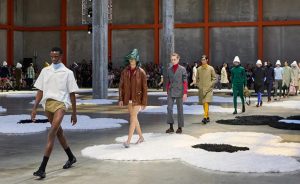Diamond engagement rings are popular because of their aesthetics, especially when they take the geometric form of an emerald cut. Part of this appeal is due to how durable diamonds are known to be. However, there are still concerns about whether emerald cut lab diamonds are as durable.

This article aims to respond to these questions by clarifying the durability aspect in relation to emerald cut lab diamond engagement rings that can help prospective buyers make a decision.
The Brilliant Birth of Lab Diamonds
Understanding the durability of man-made diamonds starts with appreciating their origin. Contrary to popular belief, synthetic diamonds are not fakes but actual diamonds having the same optical characteristics, hardness, and chemical properties as natural ones.
In advanced technological laboratories that simulate processes found on Earth, these precious stones grow over several weeks, embodying the unique resistance and hardness that has earned them admiration in a way that respects both humanity and nature.
Decoding the Mohs Scale and Diamond’s Hardness
Hardness is measured by a mineral’s ability to resist scratching on the Mohs Scale. Diamonds stand as the hardest known material, whether created or mined, with a perfect score of 10. That means diamond rings, including emerald cuts, cannot be scratched. Hence, they can be considered to have a long period of durability.
Emerald Cut and Durability
The emerald cut of the diamond is notable for its step-cut facets and wide table, which serve as a window into the diamonds interior and create what has come to be known as the hall-of-mirrors effect. But here is an equally intriguing question: does this open table and the geometrically precise shape make the stone vulnerable?
The emerald cut’s corners may chip off if they are struck hard against something, though such risk can be lessened through a protective ring setting. In its purest sense, this is really the beauty of jewelry. For those seeking a unique and symbolic alternative, the Toi Et Moi ring offer a stunning combination of complementary gemstones, beautifully blending elegance with meaningful design. For example, bezel settings, where metal encircles all or part of the perimeter around a diamond, and halo settings, which hold the diamond within a protective ring made up of smaller stones, can significantly reduce the likelihood that vulnerable edges will suffer any impacts.
Durability Independent from Source
The idea that a diamond’s origin, mainly synthetic, may affect its durability is not true. Laboratory diamonds have the same hardness and resistance to abrasion as natural ones since they share similar inherent characteristics. Therefore, they are exactly the same because of their origin but depend on how well it was cut and set as well as the care given to it.
Ensuring Longevity
Below are some tips you can follow to ensure your emerald cut lab diamond ring lasts for years.
- Setting Choices: Go for protective settings that protect corners and edges. After all, if appropriately designed, a setting would not only make a diamond look more beautiful but also enhance its toughness.
- Regular Inspections: At least once annually, have your ring professionally examined to maintain the security of the setting.
- Mindful Wear: Though diamonds are strong, mindfully wearing them will get you the most out of it. This is smart advice for protecting your ring from chemicals and accidental falls when engaged in certain activities.
Closing Thoughts
There could be concerns about the durability of emerald cut lab diamond rings, but these are easily resolved by recognizing the inherent hardness of diamonds, the accuracy of modern cuts, and good quality ring settings. Lab created diamond engagement rings have an air of sophistication that is equally enchanting as it is mysterious, meaning that they will not only captivate you through their aesthetics but also outlive generations, making them a true testament to your commitment.
Read More:

fashionabc is a fashion technology platform, comprising a digital directory and various other digital tools and supply chain solutions for the fashion industry ecosystem, that focus on ethical fashion and sustainability. We are building inclusive digital transformation tools for fashion professionals who are willing to take steps towards a more sustainable ethical fashion industry, by adopting AI and DLT blockchain technology.
* building digital profile and IP solutions for fashion businesses
* tackle issues such as provenance and counterfeit in supply chain
* contribute to the construction of a meritocratic ethical fashion industry which is certified and part of the circular economy











